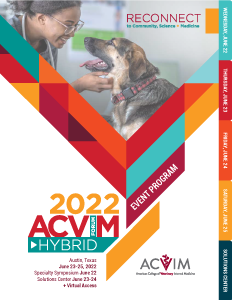Back
Please note, this session is not eligible for CE credit via on demand viewing. It is only available for CE credit if you attended the session live in person.
Scientific Session
Cardiology
Pulmonary Valve Stenting in Canine PS: Lessons Learned from 30 Cases
Thursday, June 23, 2022
10:00 AM – 11:00 AM CT
Location: ACC Ballroom A
CE: 1.5
- BS
Brian A. Scansen, DVM, MS, DACVIM (Cardiology)
Associate Professor
Colorado State University
Fort Collins, Colorado, United States
Primary Presenter(s)
For decades, balloon dilation of the pulmonary valve has been the dominant treatment strategy for pulmonary valve stenosis (PS). However, canine PS frequently is dysplastic with thickened valves, fibrotic adhesions to the sinotubular junction, and hypoplasia of the pulmonary annulus. These anatomic features limit the success and durability of balloon pulmonary valvuloplasty in some cases. Although discussed in small case reports over the last several years, large experience with stent implantation in the pulmonary position of dogs has not been described. The author has performed over 30 cases of pulmonary valve stent implantation both in native disease and in dogs that failed balloon pulmonary valvuloplasty. This experience has informed the anatomic features that should be considered prior to pursuing stent implantation for PS, the stent design and properties that work best for dogs, and the technical aspects that lead to successful implantation. These lessons learned will be shared using clinical case material.
Learning Objectives:
- Upon completion of this session, the audience member will be able to describe the case features of canine pulmonary stenosis that may benefit from stent implantation.
- Upon completion of this session, the audience member will understand the equipment required and technique used for stent implantation in the pulmonary position.
- Upon completion of this session, the audience member will appreciate the potential complications from pulmonary valve stenting and how to minimize such complications.


.png)